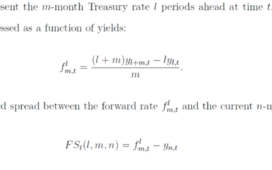The Wall Street Journal published a zeitgeist watch entry: American Towns Are Rebelling Against Megamansions. It describes how some long-established havens for the rich, such as the Hamptons and Martha’s Vineyard, are trying to tamp down on ginormous houses. This of course comes only after a spate of developing hyper-trophied homes in the area.
Having read the piece with some care, what seems most interesting, at least in terms of various objections made to the Journal writer E.B. Solomont, is the lack of a clear basis for objecting to these cancerously-large buildings. What you read is a sense of offense to what the refusniks apparently see as a widely-shared, even if hard to delineate crisply, sensibility, that these really big houses constitute an offensive too-muchness.
To make the point clearer, consider some zoning issues related to arguably overly ambitious building projects elsewhere. In New York City, I have been told of (with the name and addresses, but they are not critical to the logic of this post) a mega wealthy individual who bought there adjacent townhouses in the Upper West Side. It was in a landmarked area, so he had to preserve the facades. However, his purpose was not just to join or perhaps even combine the properties above ground. He started excavating to create a huge basement underneath all three.
The neighbors (not just on the same street but also on the street behind) went nuts. Not only was the noise level insane, but they were legitimately worried that the digging and drilling would damage their buildings. However, there was no way to stop him. They could only sue if they were harmed. They could not find a good legal basis (even under New York City’s strict building codes) to prevent prospective harm. Perhaps residence owners could get protective legislation passed, but not fast enough to stop this particular project.
Communities regularly come up with compromises between builders and incumbents who want to protect their property rights. Again, New York City has air rights, which are regularly traded, to prevent overly-dense development and make sure all of Manhattan does not become a warren of tightly-packed buildings with street shaded most of the day. Similarly, vacation and resort areas often limit the height of buildings near the shore so as not to completely block the views of older homes.
I don’t see any of these actually practical concerns expressed here, as in how the new developments might harm the property values of current owners, and how far it is reasonable to go in protecting them. Instead, this seems to be a new aesthetic, in much the same way that proper tasteful people recoil at noveau riche who not only drive gold Cadillacs but match the color of the curtains in their house to the car.1
Similarly, there are cases where communities enforce a look, such as Santa Fe requiring adobe houses in certain neighborhoods.2 And one can see why overly large houses relative to plot sizes might create a sub-optimal look for the area. For instance, if you go to the flat lands of Beverly Hills, you see very handsome, typically older houses, that come as close as possible to maxing out the land available. The house are sufficiently nice that the effect of so many houses hard by each other is not terrible….but they individually and the block in general would look better if they had been spaced out more.
But again, the article does not mention particular instances of grossness, more a rebellion against increasing grossness. The fourth para does make a case of sorts, but the particular quotes don’t line up tidily against that:
Towns from Aspen to Martha’s Vineyard are in a big-house brouhaha. Critics say mushrooming mansions cramp scenic vistas and local charm, consume excessive energy and inflate prices.
One has to wonder at the hypocrisy. It’s very likely that many of those complaining about the offensively large houses fly in private jets or helicopters, so they are hardly well-positioned to protest about energy use excesses. It is also quite possible to build a modest sized eyesore. Even though they don’t like the bulky buildings, it’s not clear that the objection really is to that as opposed to flouting one’s lucre.
I wonder if this reticence is due ultimately due to the Mark Blyth observation, “The Hamptons are not a defensible position.” In an era of much-derided population and seemingly never-ending increase in income and wealth inequality, some of the rich are getting even more worried about their personal exposure and see a cutback in lavish display as pitchfork protection.
“How big is a house?” mused Jeremy Samuelson, planning director for East Hampton, N.Y., where a working group recently proposed slashing the town’s maximum-allowed house size in half, from 20,000 square feet to 10,000 square feet….
At the May meeting, Mehring read aloud a letter by architecture critic Paul Goldberger, who remarked: “We want to be East Hampton, not Levittown-By-the-Sea.”…
“It’s just really shocking to many of us—these huge houses are the size of substantial hotels,” says Julia Livingston, the head of a working group in the Martha’s Vineyard enclave of Edgartown, Mass.
The article describes how some towns have imposed size limits: 3,600 square feet for Turto, Massachusetts, near Cape Cod, 7,500 square feet in Routt County, Colorado, which includes the Steamboat Springs ski resort, and 9,250 square feet in Pitkin County, Colorado, which includes Aspen. The expressed reason for the limits in Pitkin was energy use.
This section makes clear that the reservations extend well beyond gigantic houses imposing on the property rights of neighbors:
East Hampton’s working group is also tackling “iceberg houses,” where basements are as big (or bigger) than the homes above.
Until now, basements—and attached garages—haven’t been counted in the total square footage of a house, encouraging homeowners to dig enormous, swanky subterranean lairs. Under the proposal, the garages and finished basements would count.
At the May meeting, Samuelson highlighted a real-world example: an 11,863-square-foot house on a lot meant for 6,100 square feet.The basement, Samuelson noted, has “two guest rooms—bedrooms—an entertainment room, a wine lounge, a wine cellar, a theater, a tech room, a spa, a sauna, et cetera, et cetera, et cetera.”
“And that’s all lovely. That sounds amazing. I’m incredibly envious of the wealth and lifestyle of these people,” Samuelson added. But “it has nothing to do with whether this is the right size house for this property.”
Oddly, I didn’t read a single objection that these huge houses, with all their rooms, attract more than occasional big visitor influxes. I could see that as being obnoxious (noise levels, perceived safety risks):
Mind you, I am not a fan of this palace-masquerading-as-housing at all. But it seems instructive to see the mental gymnastics that opponents, many of whom presumably live in large homes in these luxury areas to object to these whopper buildings while exempting their own.
And perhaps some of the super and next level rich are also coming to recognize that panic rooms aren’t a great solution to resentment of their excesses (they can’t stay in them forever, no matter how well stocked) and maybe not engaging in resentment-inducing behavior would be at least as good protection. Of course paying the lower orders better would greatly reduce their vulnerability, but we are a long long way from any, let alone many, having that sort of Damascene conversion.
____
1 According to a tax maven, who makes a point of studying many American and international subcultures, people like this really do exist and even have admirers.
2 Adobe really is a great fit for the weather there, so this stipulation should not be seen as an imposition.













